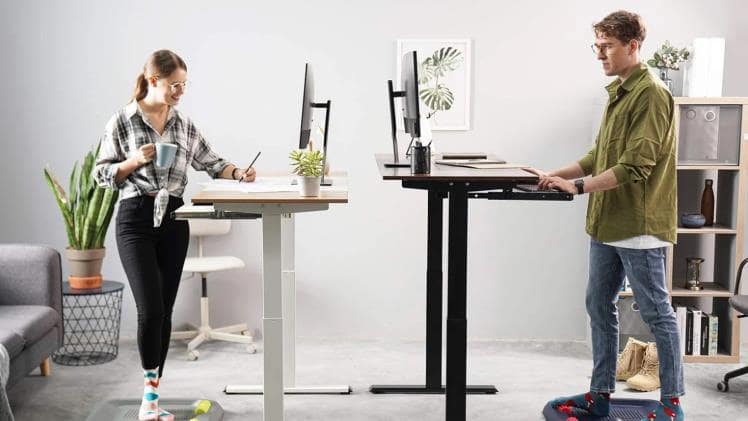Ergonomics is the study of how people interact with their working environment. It aims to find the most efficient and effective way for people to work in order to avoid injury and increase productivity. If a product isn’t ergonomic, it will not only be ineffective for its intended purpose but could also negatively impact the user’s health and safety.
Office ergonomics ensure staff members have the right furniture, technology, and working conditions effectively and comfortably complete their tasks. If workplace ergonomics are poor, it costs both employees and businesses.
Employees may experience various health concerns and workplace injuries, including:
- Numbness, tingling, or even pain in their fingers or wrists
- Joint effusion or stiffness
- Shoulder, neck, or back pain
- Vision difficulties
Why are workplace ergonomics so important?
Work-related musculoskeletal disorders (WRMSDs) are unfortunately very common and can affect any area of the body. According to The Health and Safety Executive’s annual statistics, in 2020-2021, there were 470,000 workplace musculoskeletal injuries in the UK, with a prevalence rate of 1,420 per 100,000 employees.
Work-related issues build up over time for various reasons. Some of the most frequent causes are:
- Working in the same position for long periods
- Repetitive movements performed over an extended period
- Putting a strain on one specific part of the body
- Working at a speed that does not allow for proper recovery between movements
All ergonomic office furniture is designed to make the working environment as comfortable as possible so that employees can be efficient without putting their health at risk. The ergonomic workstation comes with plenty of features to support your body throughout the day, including adjustable head and armrests, lumbar support, and an adjustable seat. Plus, the sit-stand desk ensures you’ll be able to change positions frequently during the day.
What makes a desk ergonomic
An ergonomic desk is designed to minimise the time you spend sitting during your workday. With an ergonomic office desk, you don’t have to sit for hours on end; you can adjust the desk’s height to work standing up.
Long periods of sitting may be unhealthy. Sedentary behaviour has been linked to an increased risk of developing many diseases, such as hypertension, obesity, diabetes, repetitive strain injuries, and pain in the back, neck, and shoulders.
Switching between sitting and standing throughout the day is simple, with a built-in height controller that adjusts the desk’s height at the touch of a button. This allows you to avoid staying in one posture for too long and is especially helpful if you don’t have a good posture.
By offering appropriate support when typing on a keyboard or switching between computer and paperwork, a standing desk not only helps you avoid musculoskeletal strain but also aids in the prevention of chronic illnesses.
It’s also important to consider all factors involved in creating a fully ergonomic workstation, such as the height and tilt of computer monitors, the height and stability of the flat working surface, and how often you stand vs sit.
If you’ve recently purchased a standing desk, you should be aware that transitioning to a more active lifestyle may require some adjustments. If you switch from sitting to standing all day, you might experience pain in your back, legs, and feet. The standard recommendation is to gradually progress – starting with thirty minutes each day and increasing over time.
Although standing is a healthy and productive way to work, it is ultimately your decision how often you stand while working. Mixing up your routine by walking around and taking brief breaks will help you power through the workday without sacrificing productivity or concentration.

